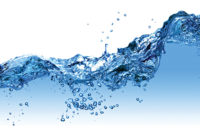According to the United Nations, via www.waterless.com, more than 1 billion people lack access to fresh, drinkable water. Also, nearly 3 billion people have no access to water at least one month per year.
The UN estimates global demand for water will exceed supply in 2030, meaning more cities will mirror Cape Town, South Africa, which has essentially run out of water.
The following is a list of the seven cities likely to run out of water by 2030:
1. Sao Paulo, Brazil: With 21.5 million people and a 2015 drought that lowered water reservoirs below 4% of capacity, many experts doubt the city could survive another severe drought.
2. Beijing, China: The country has 20% of the world’s population, but only 7% of the earth’s fresh water. Water reserves are declining, and in 2015, it was determined that about half of the city’s water is so polluted, it can’t be used for drinking, agriculture or even industrial use any more.
3. Moscow, Russia: Pollution issues make up to 60% of its water unfit for drinking.
4. Cairo, Egypt: The Nile provides the country with nearly all of its water, but the river is becoming polluted and more fresh water is used for agriculture. The UN believes Cairo may run out of water in 2025.
5. Mexico City, Mexico: The city’s 21 million people only have access to water for a few hours per week. Much of the city’s water is imported, but as much as 40% of that water is lost because of leaking infrastructure.
6. London, England: The city receives plenty of rainfall, but most of its drinking water comes from rivers that can’t keep up with demand. The UN expects London to have water supply issues by 2025 and severe problems by 2040.
7. Miami, Florida: The region’s Biscayne Aquifer is the main source of fresh water, but is becoming filled with undrinkable sea water.



